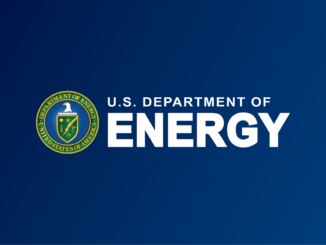
Countries across the globe focus on cutting greenhouse gas emissions, researchers are working on developing a host of green technologies that will ease global heating. Apart from the rise in renewable energy sources, there is a surge in the production of electric vehicles. EVs are expected to curb dependency on fossil fuel use and fight climate change as experts believe plug-in vehicles are more climate-friendly than conventional vehicles. As electric cars go mainstream, their environmental impact remains up for debate.
Experts have pointed out that the contribution of electric vehicles to the environment is clouded in how they are made and charged up. Most consumers know only the ‘clean’ aspects of EVs, while the dirty aspects of the production process often remain out of sight, Pamela Coke-Hamilton, UNCTAD’s director of international trade, said.
EVs charge on the power that comes from the electric grid, which is often powered by fossil fuels. Batteries are a bigger problem for EVs as they are made of rare earth elements such as lithium, nickel and cobalt which are mined with very polluting processes. Sourced from ecologically sensitive and poor places, these rare elements are linked to human rights violations such as child labour in developing economies as well.
As demand for EVs and renewable energy sources rise, the pressure on metals used in these technologies also soars. This also brings us to the quintessential question related to green technologies in general: Do we have enough metals to go green?
By 2050, the world will require three billion tonnes of metals like lithium, graphite and cobalt to deploy wind, solar and geothermal power that will curtail the global temperature rise to below 2 degree C, World Bank estimates show. This implies the transition to clean energy will be significantly mineral intensive.
According to the IMF, the battery pack of a typical electric vehicle requires about 8 kg lithium, 35 kg nickel, 20 kg manganese, and 14 kg of cobalt. Charging stations for EVs need substantial amounts of copper. At the same time, solar panels required silicon, silver, copper, and zinc in large quantities, while wind turbines need copper, iron ore, and aluminum.
The share of power from renewables under the International Energy Agency’s roadmap to net-zero carbon emissions by 2050 would rise from current levels of around 10 percent to 60 percent, while the share of fossil fuels would shrink from the current 80 percent to about 20 percent.
An eightfold increase is required in renewable energy investments to replace fossil fuels with low-carbon technologies. This will also cause a strong rise in demand for metals.
The current production rates of metals like graphite, cobalt and nickel appear inadequate when compared with the projected increase in consumption through 2050. Platinum, copper and lithium supplies at the current level show a 30 percent to 40 percent gap versus demand to satisfy future needs, the IMF said in a blog.
Can production be scaled up?
Given the existing reserves, some minerals such as graphite and vanadium would allow greater production with higher investments in extraction. For minerals like lithium, lead, zinc, silver and silicon the current reserves may not be enough for future demand.
Environment and health cost
Mining of metals like nickel and cobalt come at an environmental and health cost. Nickel is predominately mined in Canada, Australia, Russia, Indonesia and the Philippines. In 2017, the Philippines closed 17 nickel mines over environmental concerns. The Ravensthorpe mine in Western Australia met the same fate that year, The Guardian reported.
On the other hand, about 20 percent of cobalt comes from artisanal mines in the Democratic Republic of the Congo, which accounts for over two-thirds of global production of the metal. These mines employ 40,000 children, working in dangerous conditions, Unicef said.
A United Nations Conference on Trade and Development (UNCTAD) report said excavation exposes miners including children to dust that may contain toxic metals such as uranium that cause respiratory diseases and birth defects.
Sulphur minerals coming out from cobalt mines when exposed to air and water can generate sulphuric acid, which has the potential to devastate rivers, streams and aquatic life for hundreds of years through a process called acid mine drainage, UNCTAD reported.
Mining graphite can cause similar health problems in nearby communities and contaminate soils around the site, it said.
Transitioning to sustainable energy requires us to rethink the ways of extraction, consumption, disposal and reuse of resources. To reduce the demand for minerals and their associated impacts, governments can encourage and support greater mineral efficiency through reuse and recycling.
According to an Earthworks 2019 study on responsible mineral sourcing, effective mineral efficiency and recycling policies by governments can bring down primary mineral demand by about 30-40 percent for some minerals. Battery recycling could be one such solution.
To minimise the environmental cost of mining, governments could curtail unnecessary mining of luxury and speculative items, an international conference by Mining Watch Canada said. With proper public policies in place, demand for some of these minerals could be reduced, the experts at the conference said. They also suggested overhauling existing market interventions through subsidies and tax expenditures.
Reiterating the experts, UNCTAD recommended the industry reduce the need for mining. Scientists are working on ways to replace graphite in EV batteries with widely available silicon. As a result of the lower use of minerals, batteries would cost lower and make electric cars more pocket-friendly.
Scientists are also mulling changes in mining technology that would reduce the carbon footprint. One such way is to develop a natural process of extracting metal and cleaning up the mine waste with the help of bacteria, The Conversation reported.
Researchers are also looking at ways to use small machines like a swarm of ants to extract metals with a far smaller footprint.



